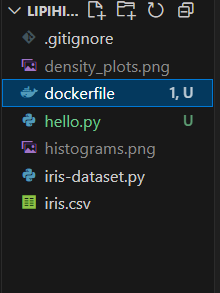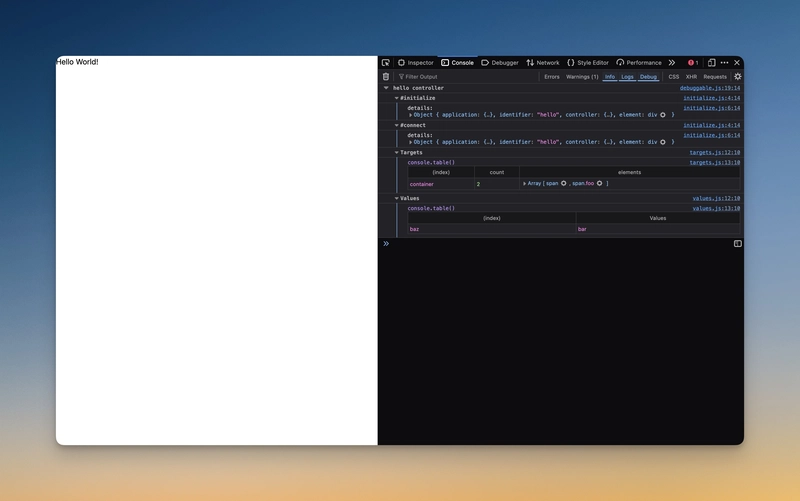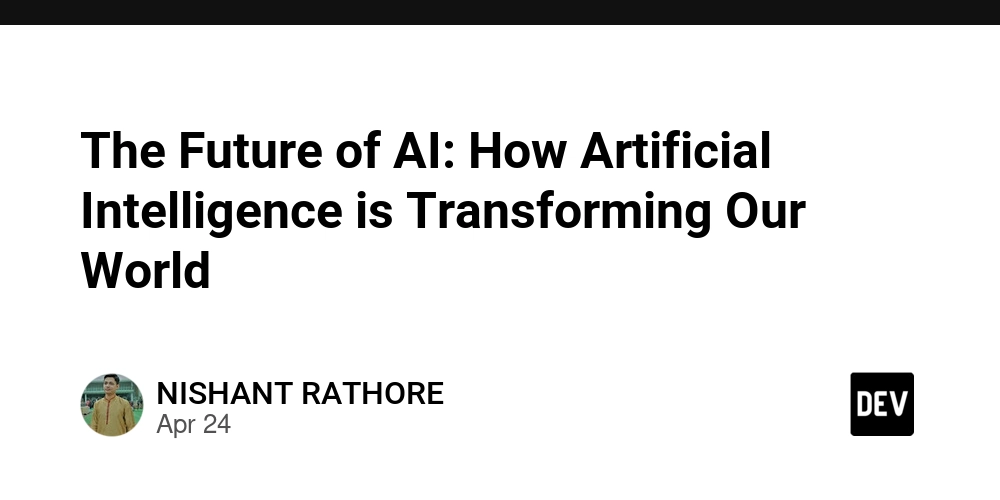Complete Overview of Generative & Predictive AI for Application Security
AI is transforming the field of application security by allowing smarter bug discovery, automated assessments, and even autonomous threat hunting. This guide provides an comprehensive overview on how machine learning and AI-driven solutions function in the application security domain, written for AppSec specialists and executives in tandem. We’ll delve into the evolution of AI in AppSec, its present capabilities, challenges, the rise of autonomous AI agents, and future developments. Let’s begin our exploration through the past, present, and prospects of artificially intelligent AppSec defenses. History and Development of AI in AppSec Initial Steps Toward Automated AppSec Long before artificial intelligence became a buzzword, security teams sought to automate vulnerability discovery. In the late 1980s, Dr. Barton Miller’s pioneering work on fuzz testing demonstrated the impact of automation. His 1988 class project randomly generated inputs to crash UNIX programs — “fuzzing” exposed that a significant portion of utility programs could be crashed with random data. multi-agent approach to application security This straightforward black-box approach paved the groundwork for later security testing techniques. By the 1990s and early 2000s, developers employed automation scripts and scanners to find common flaws. Early source code review tools behaved like advanced grep, scanning code for risky functions or hard-coded credentials. While these pattern-matching methods were beneficial, they often yielded many incorrect flags, because any code mirroring a pattern was reported without considering context. Evolution of AI-Driven Security Models During the following years, academic research and corporate solutions improved, moving from static rules to intelligent interpretation. Machine learning gradually made its way into the application security realm. Early examples included neural networks for anomaly detection in network traffic, and probabilistic models for spam or phishing — not strictly AppSec, but predictive of the trend. Meanwhile, code scanning tools improved with data flow analysis and execution path mapping to trace how information moved through an software system. A key concept that arose was the Code Property Graph (CPG), combining structural, control flow, and information flow into a single graph. This approach allowed more contextual vulnerability detection and later won an IEEE “Test of Time” award. By depicting a codebase as nodes and edges, analysis platforms could pinpoint complex flaws beyond simple pattern checks. agentic ai in appsec In 2016, DARPA’s Cyber Grand Challenge demonstrated fully automated hacking systems — designed to find, prove, and patch vulnerabilities in real time, minus human intervention. The winning system, “Mayhem,” integrated advanced analysis, symbolic execution, and a measure of AI planning to go head to head against human hackers. This event was a landmark moment in self-governing cyber defense. Significant Milestones of AI-Driven Bug Hunting With the growth of better ML techniques and more datasets, machine learning for security has accelerated. Industry giants and newcomers alike have reached milestones. One notable leap involves machine learning models predicting software vulnerabilities and exploits. An example is the Exploit Prediction Scoring System (EPSS), which uses a vast number of features to forecast which flaws will be exploited in the wild. This approach assists defenders prioritize the highest-risk weaknesses. In detecting code flaws, deep learning models have been supplied with enormous codebases to identify insecure constructs. Microsoft, Google, and various organizations have revealed that generative LLMs (Large Language Models) boost security tasks by writing fuzz harnesses. For one case, Google’s security team used LLMs to generate fuzz tests for public codebases, increasing coverage and spotting more flaws with less human effort. Modern AI Advantages for Application Security Today’s application security leverages AI in two broad ways: generative AI, producing new outputs (like tests, code, or exploits), and predictive AI, scanning data to highlight or forecast vulnerabilities. These capabilities reach every segment of application security processes, from code inspection to dynamic scanning. AI-Generated Tests and Attacks Generative AI creates new data, such as test cases or payloads that uncover vulnerabilities. This is visible in AI-driven fuzzing. Conventional fuzzing uses random or mutational payloads, in contrast generative models can devise more strategic tests. Google’s OSS-Fuzz team implemented text-based generative systems to write additional fuzz targets for open-source projects, boosting defect findings. In the same vein, generative AI can aid in constructing exploit programs. Researchers judiciously demonstrate that LLMs facilitate the creation of proof-of-concept code once a vulnerability is understood. On the adver

AI is transforming the field of application security by allowing smarter bug discovery, automated assessments, and even autonomous threat hunting. This guide provides an comprehensive overview on how machine learning and AI-driven solutions function in the application security domain, written for AppSec specialists and executives in tandem. We’ll delve into the evolution of AI in AppSec, its present capabilities, challenges, the rise of autonomous AI agents, and future developments. Let’s begin our exploration through the past, present, and prospects of artificially intelligent AppSec defenses.
History and Development of AI in AppSec
Initial Steps Toward Automated AppSec
Long before artificial intelligence became a buzzword, security teams sought to automate vulnerability discovery. In the late 1980s, Dr. Barton Miller’s pioneering work on fuzz testing demonstrated the impact of automation. His 1988 class project randomly generated inputs to crash UNIX programs — “fuzzing” exposed that a significant portion of utility programs could be crashed with random data. multi-agent approach to application security This straightforward black-box approach paved the groundwork for later security testing techniques. By the 1990s and early 2000s, developers employed automation scripts and scanners to find common flaws. Early source code review tools behaved like advanced grep, scanning code for risky functions or hard-coded credentials. While these pattern-matching methods were beneficial, they often yielded many incorrect flags, because any code mirroring a pattern was reported without considering context.
Evolution of AI-Driven Security Models
During the following years, academic research and corporate solutions improved, moving from static rules to intelligent interpretation. Machine learning gradually made its way into the application security realm. Early examples included neural networks for anomaly detection in network traffic, and probabilistic models for spam or phishing — not strictly AppSec, but predictive of the trend. Meanwhile, code scanning tools improved with data flow analysis and execution path mapping to trace how information moved through an software system.
A key concept that arose was the Code Property Graph (CPG), combining structural, control flow, and information flow into a single graph. This approach allowed more contextual vulnerability detection and later won an IEEE “Test of Time” award. By depicting a codebase as nodes and edges, analysis platforms could pinpoint complex flaws beyond simple pattern checks.
agentic ai in appsec In 2016, DARPA’s Cyber Grand Challenge demonstrated fully automated hacking systems — designed to find, prove, and patch vulnerabilities in real time, minus human intervention. The winning system, “Mayhem,” integrated advanced analysis, symbolic execution, and a measure of AI planning to go head to head against human hackers. This event was a landmark moment in self-governing cyber defense.
Significant Milestones of AI-Driven Bug Hunting
With the growth of better ML techniques and more datasets, machine learning for security has accelerated. Industry giants and newcomers alike have reached milestones. One notable leap involves machine learning models predicting software vulnerabilities and exploits. An example is the Exploit Prediction Scoring System (EPSS), which uses a vast number of features to forecast which flaws will be exploited in the wild. This approach assists defenders prioritize the highest-risk weaknesses.
In detecting code flaws, deep learning models have been supplied with enormous codebases to identify insecure constructs. Microsoft, Google, and various organizations have revealed that generative LLMs (Large Language Models) boost security tasks by writing fuzz harnesses. For one case, Google’s security team used LLMs to generate fuzz tests for public codebases, increasing coverage and spotting more flaws with less human effort.
Modern AI Advantages for Application Security
Today’s application security leverages AI in two broad ways: generative AI, producing new outputs (like tests, code, or exploits), and predictive AI, scanning data to highlight or forecast vulnerabilities. These capabilities reach every segment of application security processes, from code inspection to dynamic scanning.
AI-Generated Tests and Attacks
Generative AI creates new data, such as test cases or payloads that uncover vulnerabilities. This is visible in AI-driven fuzzing. Conventional fuzzing uses random or mutational payloads, in contrast generative models can devise more strategic tests. Google’s OSS-Fuzz team implemented text-based generative systems to write additional fuzz targets for open-source projects, boosting defect findings.
In the same vein, generative AI can aid in constructing exploit programs. Researchers judiciously demonstrate that LLMs facilitate the creation of proof-of-concept code once a vulnerability is understood. On the adversarial side, ethical hackers may use generative AI to expand phishing campaigns. From a security standpoint, organizations use automatic PoC generation to better harden systems and create patches.
AI-Driven Forecasting in AppSec
Predictive AI sifts through code bases to locate likely security weaknesses. Rather than manual rules or signatures, a model can infer from thousands of vulnerable vs. safe software snippets, spotting patterns that a rule-based system could miss. This approach helps flag suspicious patterns and predict the risk of newly found issues.
Prioritizing flaws is a second predictive AI application. The exploit forecasting approach is one case where a machine learning model scores known vulnerabilities by the probability they’ll be exploited in the wild. This helps security programs concentrate on the top subset of vulnerabilities that carry the most severe risk. Some modern AppSec platforms feed pull requests and historical bug data into ML models, estimating which areas of an system are particularly susceptible to new flaws.
Merging AI with SAST, DAST, IAST
Classic SAST tools, DAST tools, and IAST solutions are more and more empowering with AI to improve performance and precision.
SAST analyzes code for security issues without running, but often triggers a flood of spurious warnings if it lacks context. AI assists by ranking alerts and dismissing those that aren’t truly exploitable, through smart control flow analysis. Tools such as Qwiet AI and others use a Code Property Graph and AI-driven logic to evaluate reachability, drastically reducing the extraneous findings.
DAST scans deployed software, sending malicious requests and monitoring the reactions. AI boosts DAST by allowing dynamic scanning and intelligent payload generation. The AI system can interpret multi-step workflows, single-page applications, and APIs more proficiently, broadening detection scope and decreasing oversight.
IAST, which hooks into the application at runtime to record function calls and data flows, can yield volumes of telemetry. An AI model can interpret that data, identifying dangerous flows where user input reaches a critical sensitive API unfiltered. By integrating IAST with ML, unimportant findings get pruned, and only valid risks are surfaced.
Comparing Scanning Approaches in AppSec
Modern code scanning tools often combine several techniques, each with its pros/cons:
Grepping (Pattern Matching): The most fundamental method, searching for tokens or known patterns (e.g., suspicious functions). Fast but highly prone to wrong flags and false negatives due to lack of context.
Signatures (Rules/Heuristics): Signature-driven scanning where security professionals define detection rules. It’s useful for common bug classes but limited for new or unusual bug types.
Code Property Graphs (CPG): A more modern context-aware approach, unifying syntax tree, CFG, and data flow graph into one graphical model. Tools analyze the graph for critical data paths. Combined with ML, it can uncover unknown patterns and reduce noise via data path validation.
In practice, solution providers combine these methods. They still employ rules for known issues, but they augment them with AI-driven analysis for deeper insight and machine learning for prioritizing alerts.
Securing Containers & Addressing Supply Chain Threats
As organizations shifted to Docker-based architectures, container and dependency security became critical. AI helps here, too:
Container Security: AI-driven image scanners inspect container files for known security holes, misconfigurations, or sensitive credentials. Some solutions assess whether vulnerabilities are active at execution, lessening the excess alerts. Meanwhile, adaptive threat detection at runtime can detect unusual container actions (e.g., unexpected network calls), catching break-ins that traditional tools might miss.
Supply Chain Risks: With millions of open-source libraries in public registries, manual vetting is unrealistic. AI can analyze package documentation for malicious indicators, detecting backdoors. Machine learning models can also evaluate the likelihood a certain third-party library might be compromised, factoring in maintainer reputation. This allows teams to focus on the most suspicious supply chain elements. Similarly, AI can watch for anomalies in build pipelines, ensuring that only approved code and dependencies go live.
Issues and Constraints
Although AI introduces powerful capabilities to application security, it’s not a magical solution. Teams must understand the limitations, such as inaccurate detections, exploitability analysis, training data bias, and handling undisclosed threats.
Accuracy Issues in AI Detection
All machine-based scanning encounters false positives (flagging harmless code) and false negatives (missing dangerous vulnerabilities). AI can mitigate the false positives by adding reachability checks, yet it risks new sources of error. A model might incorrectly detect issues or, if not trained properly, miss a serious bug. Hence, manual review often remains required to verify accurate alerts.
AI AppSec Measuring Whether Flaws Are Truly Dangerous
Even if AI identifies a vulnerable code path, that doesn’t guarantee hackers can actually reach it. Determining real-world exploitability is difficult. Some frameworks attempt deep analysis to demonstrate or dismiss exploit feasibility. However, full-blown practical validations remain uncommon in commercial solutions. Therefore, many AI-driven findings still need human analysis to label them urgent.
Inherent Training Biases in Security AI
AI systems train from existing data. If that data is dominated by certain technologies, or lacks instances of emerging threats, the AI might fail to detect them. Additionally, a system might disregard certain languages if the training set indicated those are less prone to be exploited. Ongoing updates, diverse data sets, and bias monitoring are critical to lessen this issue.
Dealing with the Unknown
Machine learning excels with patterns it has processed before. A wholly new vulnerability type can escape notice of AI if it doesn’t match existing knowledge. Malicious parties also work with adversarial AI to mislead defensive systems. Hence, AI-based solutions must update constantly. Some vendors adopt anomaly detection or unsupervised clustering to catch strange behavior that pattern-based approaches might miss. Yet, even these unsupervised methods can miss cleverly disguised zero-days or produce red herrings.
Agentic Systems and Their Impact on AppSec
A recent term in the AI domain is agentic AI — autonomous agents that don’t merely produce outputs, but can pursue tasks autonomously. In security, this means AI that can orchestrate multi-step operations, adapt to real-time feedback, and act with minimal human input.
Defining Autonomous AI Agents
Agentic AI programs are given high-level objectives like “find vulnerabilities in this software,” and then they plan how to do so: gathering data, conducting scans, and adjusting strategies in response to findings. Consequences are wide-ranging: we move from AI as a tool to AI as an self-managed process.
Offensive vs. Defensive AI Agents
Offensive (Red Team) Usage: Agentic AI can initiate simulated attacks autonomously. Vendors like FireCompass advertise an AI that enumerates vulnerabilities, crafts attack playbooks, and demonstrates compromise — all on its own. Similarly, open-source “PentestGPT” or comparable solutions use LLM-driven analysis to chain scans for multi-stage penetrations.
Defensive (Blue Team) Usage: On the defense side, AI agents can oversee networks and independently respond to suspicious events (e.g., isolating a compromised host, updating firewall rules, or analyzing logs). Some security orchestration platforms are experimenting with “agentic playbooks” where the AI executes tasks dynamically, in place of just following static workflows.
multi-agent approach to application security Autonomous Penetration Testing and Attack Simulation
Fully self-driven penetration testing is the ambition for many security professionals. Tools that methodically detect vulnerabilities, craft attack sequences, and report them with minimal human direction are turning into a reality. Notable achievements from DARPA’s Cyber Grand Challenge and new self-operating systems indicate that multi-step attacks can be combined by AI.
Risks in Autonomous Security
With great autonomy comes responsibility. An autonomous system might unintentionally cause damage in a critical infrastructure, or an attacker might manipulate the system to mount destructive actions. Careful guardrails, segmentation, and human approvals for risky tasks are unavoidable. Nonetheless, agentic AI represents the next evolution in security automation.
Upcoming Directions for AI-Enhanced Security
AI’s influence in AppSec will only grow. We project major changes in the near term and decade scale, with emerging regulatory concerns and responsible considerations.
Immediate Future of AI in Security
Over the next couple of years, companies will integrate AI-assisted coding and security more broadly. Developer platforms will include vulnerability scanning driven by LLMs to highlight potential issues in real time. Intelligent test generation will become standard. Regular ML-driven scanning with agentic AI will supplement annual or quarterly pen tests. Expect improvements in noise minimization as feedback loops refine ML models.
Cybercriminals will also leverage generative AI for malware mutation, so defensive filters must evolve. We’ll see phishing emails that are nearly perfect, necessitating new ML filters to fight machine-written lures.
Regulators and authorities may start issuing frameworks for transparent AI usage in cybersecurity. For example, rules might mandate that companies track AI outputs to ensure accountability.
Long-Term Outlook (5–10+ Years)
In the decade-scale timespan, AI may overhaul the SDLC entirely, possibly leading to:
AI-augmented development: Humans co-author with AI that produces the majority of code, inherently enforcing security as it goes.
Automated vulnerability remediation: Tools that don’t just detect flaws but also patch them autonomously, verifying the viability of each solution.
discover more Proactive, continuous defense: Intelligent platforms scanning apps around the clock, predicting attacks, deploying security controls on-the-fly, and battling adversarial AI in real-time.
Secure-by-design architectures: AI-driven architectural scanning ensuring systems are built with minimal vulnerabilities from the start.
We also predict that AI itself will be strictly overseen, with compliance rules for AI usage in safety-sensitive industries. This might demand traceable AI and regular checks of ML models.
Oversight and Ethical Use of AI for AppSec
As AI moves to the center in application security, compliance frameworks will expand. We may see:
AI-powered compliance checks: Automated auditing to ensure standards (e.g., PCI DSS, SOC 2) are met continuously.
Governance of AI models: Requirements that companies track training data, show model fairness, and record AI-driven decisions for auditors.
Incident response oversight: If an autonomous system conducts a defensive action, what role is liable? Defining accountability for AI misjudgments is a challenging issue that compliance bodies will tackle.
Ethics and Adversarial AI Risks
Apart from compliance, there are social questions. Using AI for insider threat detection might cause privacy invasions. Relying solely on AI for life-or-death decisions can be unwise if the AI is manipulated. Meanwhile, adversaries employ AI to evade detection. Data poisoning and prompt injection can mislead defensive AI systems.
Adversarial AI represents a growing threat, where threat actors specifically target ML models or use generative AI to evade detection. Ensuring the security of ML code will be an key facet of AppSec in the future.
Final Thoughts
AI-driven methods have begun revolutionizing software defense. We’ve explored the historical context, contemporary capabilities, hurdles, autonomous system usage, and long-term prospects. The key takeaway is that AI functions as a powerful ally for defenders, helping spot weaknesses sooner, rank the biggest threats, and handle tedious chores.
Yet, it’s no panacea. False positives, training data skews, and novel exploit types still demand human expertise. The constant battle between hackers and protectors continues; AI is merely the most recent arena for that conflict. Organizations that adopt AI responsibly — aligning it with human insight, robust governance, and ongoing iteration — are poised to prevail in the evolving world of application security.
Ultimately, the opportunity of AI is a safer digital landscape, where security flaws are discovered early and fixed swiftly, and where protectors can counter the agility of attackers head-on. With ongoing research, collaboration, and evolution in AI technologies, that vision could come to pass in the not-too-distant timeline.
discover more










































































